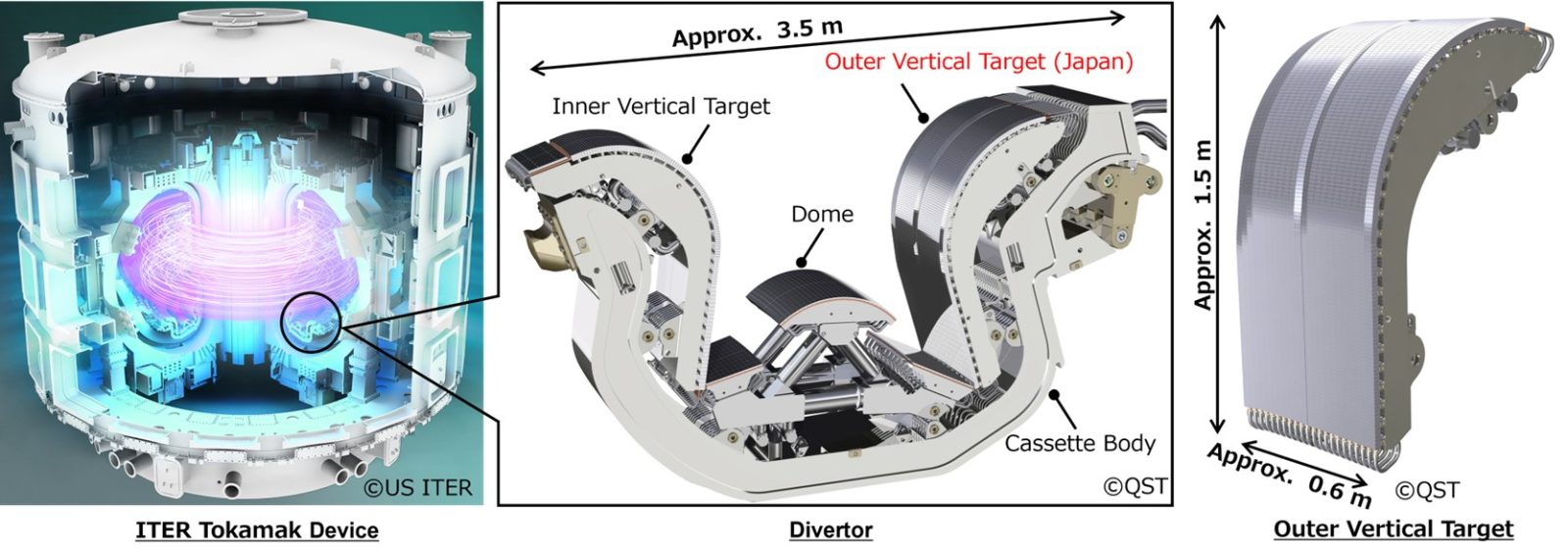Hitachi and Japan’s National Institutes for Quantum Science and Technology (QST) have completed a second prototype of the “outer vertical target,” a key component of the divertor used in the ITER fusion experimental reactor in France. Divertors are critical parts of the reactor that remove impurities and manage heat inside the plasma core. The second prototype was finished in March 2025 after development began in January 2022. It passed a high-heat-load test by the ITER Organization, showing it can handle extreme fusion conditions.
This prototype uses strong materials like tungsten and copper alloy, which are tough to process but needed to endure temperatures up to 20 megawatts per square meter. Hitachi introduced an automatic welding system and precision assembly methods to handle these materials and ensure reliable performance. These technologies help divertors survive intense heat and electromagnetic forces inside the reactor.
QST is responsible for delivering 58 outer vertical targets to ITER. The company that will produce the remaining 40 units is yet to be selected. Hitachi and QST plan to continue supporting the ITER project and aim to supply similar components to other fusion-related efforts, including experimental reactors and startup ventures in the sector.

















Leave a comment